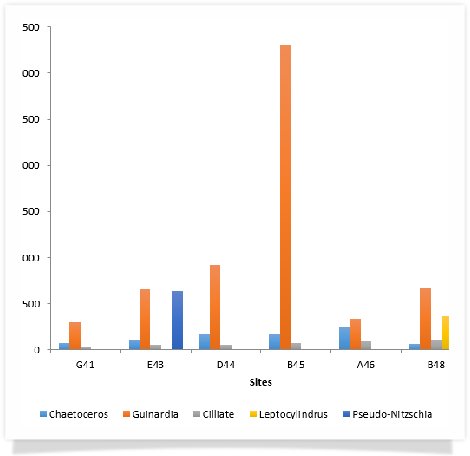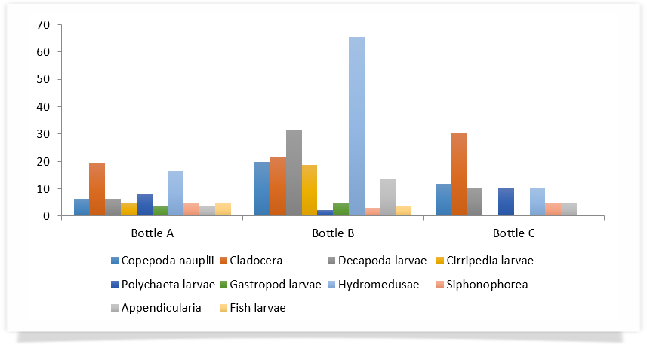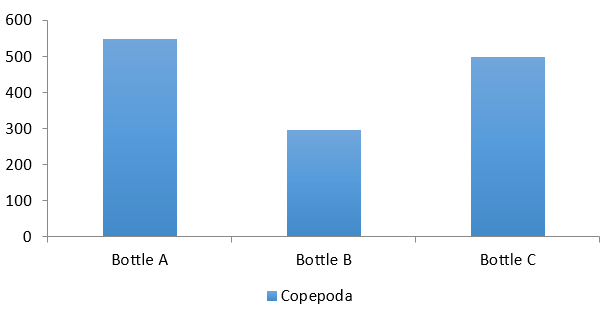

The biology of a marine environment depend strongly on the physical and chemical characteristics of the habitat in order to survive and to structure their distributions through time and space. The aim of the biological analysis was to see whether the quantity of individuals and the dominant species changed with depth, location up the estuary and time throughout the day. Phytoplankton were collected in the Niskin bottles at varying depths and were analysed using microscopes, after being stained with lugols iodine. Zooplankton were collected at 3 locations by trawling a zooplankton net at the surface with a mesh size of 200µm and a diameter of 50cm behind the boat. These were in fixed in formalin and analysed under the microscope.

Guinardia sp. are the most abundant genus of phytoplankton at all sites sampled, with the number of individuals ranging from 300 – 3300 individuals/ml. Guinardia sp. are diatoms which require silicon for growth, silicon levels increase up the estuary promoting growth. Silicon was not completely depleted at the mouth of the estuary allowing for Guinardia sp. to dominate at all sites [10]. Site A had the largest species diversity, 8 species, with Site D having the fewest species, 3 species. Although Site A had the most species it had the lowest total number of all phytoplankton individuals/ml (Fig 1). Individuals/ml increase up the estuary as nutrients increased away from the mouth of the estuary.
Site B was taken as a time series, with site B45 taken 107 minutes before B48. There were large changes in species diversity and individual/ml between the two samples. This may be due to vertical migration through the water column as phytoplankton migrate to avoid areas of fast flow to maintain their position in the estuary, as the samples were taken at different depths, 7m and 1m respectively [12].


Zooplankton would be expected to dominate in early summer after the spring phytoplankton bloom [11]. However the low zooplankton populations in the estuary do not coincide with the high phytoplankton numbers found. Copepoda dominate the zooplankton population in the Fal estuary. Their population decreases at Site D44 (Bottle B), however the abundances of other zooplankton species are highest at Site D44 compared with the other sites.
Fish larvae were found indicating that fish species use the estuary as a nursery ground during early life stages, benefitting from a large food source, phytoplankton, a decrease in number of predators and a factors associated with a tidal flux [9]